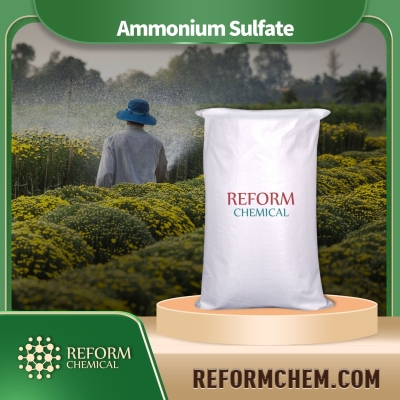-
Categories
-
Pharmaceutical Intermediates
-
Active Pharmaceutical Ingredients
-
Food Additives
- Industrial Coatings
- Agrochemicals
- Dyes and Pigments
- Surfactant
- Flavors and Fragrances
- Chemical Reagents
- Catalyst and Auxiliary
- Natural Products
- Inorganic Chemistry
-
Organic Chemistry
-
Biochemical Engineering
- Analytical Chemistry
-
Cosmetic Ingredient
- Water Treatment Chemical
-
Pharmaceutical Intermediates
Promotion
ECHEMI Mall
Wholesale
Weekly Price
Exhibition
News
-
Trade Service
"Market research shows that the agrochemical market has been at a low level since 2015.
" Juergen Huff, vice president of global strategic marketing for BASF's Agricultural Solutions division, said recently
.
After crop futures prices fell due to trade frictions in September last year, market trends are improving and continue into 2019, while the global inventory levels of most major commodities are still at historical highs
.
Trade uncertainty and exchange rate fluctuations may also be possible It will last until 2019.
" He added, "Improved weather conditions and higher commodity prices in 2019 may be good for the global agrochemical industry, but it is still not easy to predict
.
"? Wilbur-Ellis Agrochemicals, a US agrochemical distributor Business President Mark
.
Ripato (Mark Ripato) said that transportation costs and global supply chain resetting are one of the factors that have caused the price of agrochemicals to rise sharply
.
China has become more stringent in enforcing environmental regulations
.
In 2018, China's agrochemical exports fell by about one-third.
? Sino-US trade frictions have also had a significant impact on the volatility of the agrochemical market
.
Ripato said: "Regardless of the final result, we have imposed a 10% tariff on some active ingredients in agrochemicals
.
The trade war is also pushing Brazil to expand soybean plantings, and it is expected that Brazil will sell more soybeans to China
.
Supply and demand changes.
It will definitely affect pricing
.
” In the past three years, in response to weak crop prices and sluggish profit margins in the industry, global agrochemical products have been deeply integrated
.
Farmers are continuing to work hard to deal with the increasing resistance of weeds, and pesticide regulatory pressure has kept the use of new drugs to a minimum, while also opening the door to new biotechnologies
.
? The above factors are bringing more uncertainty to the global agrochemical market
.
Ripato said that in early December of last year, before the progress of trade negotiations with China, we all believed that the corn planting area in the United States would increase and the soybean planting area would decrease
.
In fact, China has recently purchased more soybeans from the United States than expected, but this is still not enough to promote soybean plantings over corn
.
? Supply chain and tariff issues may turn the market for agricultural products in a difficult period
.
Ripato said that agrochemicals, fertilizers and seed/character businesses are all in the latter half of the life cycle
.
This also means that the profitability of the industry has deteriorated and suppliers will be integrated
.
In the past three years, due to the pressure of the industry's profitability, the industry has undergone a large-scale reorganization-the six major agrochemical companies in the past have been integrated to leave four, namely Bayer, Corteva, BASF and Syngenta
.
The fertilizer industry giants Potashcorp and Agrium also merged in 2018
.
Ripato said that there are reasons for these companies to integrate, because profit margins are under pressure.
If their shareholders are to obtain expected profits in the future, they must reduce operating costs through integration
.
Ripato also said that customers do not need to worry about the scale of new suppliers
.
"We are in a period where all suppliers are working hard to improve efficiency
.
Although the scale is large, there is no monopoly
.
At the same time, herbicide resistance is still increasing, especially in the United States.
It is expected that active ingredients will continue to be promoted in 2019.
The demand for medicines is growing
.
”? “For growers, the regulatory environment is also not conducive to the introduction of new chemical substances, but it also provides opportunities for biological solutions
.
For example, the regulatory environment in the European Union has become so strict that in 2017 There were no new chemical registration applications in 2015.
The
market for biological solutions is growing and is in line with sustainable development goals
.
” Ripato said
.
Although the agrochemical market has been in a downturn, as the population grows and the demand for agricultural products continues to expand, Ripato remains optimistic about the long-term prospects
.
" Juergen Huff, vice president of global strategic marketing for BASF's Agricultural Solutions division, said recently
.
After crop futures prices fell due to trade frictions in September last year, market trends are improving and continue into 2019, while the global inventory levels of most major commodities are still at historical highs
.
Trade uncertainty and exchange rate fluctuations may also be possible It will last until 2019.
" He added, "Improved weather conditions and higher commodity prices in 2019 may be good for the global agrochemical industry, but it is still not easy to predict
.
"? Wilbur-Ellis Agrochemicals, a US agrochemical distributor Business President Mark
.
Ripato (Mark Ripato) said that transportation costs and global supply chain resetting are one of the factors that have caused the price of agrochemicals to rise sharply
.
China has become more stringent in enforcing environmental regulations
.
In 2018, China's agrochemical exports fell by about one-third.
? Sino-US trade frictions have also had a significant impact on the volatility of the agrochemical market
.
Ripato said: "Regardless of the final result, we have imposed a 10% tariff on some active ingredients in agrochemicals
.
The trade war is also pushing Brazil to expand soybean plantings, and it is expected that Brazil will sell more soybeans to China
.
Supply and demand changes.
It will definitely affect pricing
.
” In the past three years, in response to weak crop prices and sluggish profit margins in the industry, global agrochemical products have been deeply integrated
.
Farmers are continuing to work hard to deal with the increasing resistance of weeds, and pesticide regulatory pressure has kept the use of new drugs to a minimum, while also opening the door to new biotechnologies
.
? The above factors are bringing more uncertainty to the global agrochemical market
.
Ripato said that in early December of last year, before the progress of trade negotiations with China, we all believed that the corn planting area in the United States would increase and the soybean planting area would decrease
.
In fact, China has recently purchased more soybeans from the United States than expected, but this is still not enough to promote soybean plantings over corn
.
? Supply chain and tariff issues may turn the market for agricultural products in a difficult period
.
Ripato said that agrochemicals, fertilizers and seed/character businesses are all in the latter half of the life cycle
.
This also means that the profitability of the industry has deteriorated and suppliers will be integrated
.
In the past three years, due to the pressure of the industry's profitability, the industry has undergone a large-scale reorganization-the six major agrochemical companies in the past have been integrated to leave four, namely Bayer, Corteva, BASF and Syngenta
.
The fertilizer industry giants Potashcorp and Agrium also merged in 2018
.
Ripato said that there are reasons for these companies to integrate, because profit margins are under pressure.
If their shareholders are to obtain expected profits in the future, they must reduce operating costs through integration
.
Ripato also said that customers do not need to worry about the scale of new suppliers
.
"We are in a period where all suppliers are working hard to improve efficiency
.
Although the scale is large, there is no monopoly
.
At the same time, herbicide resistance is still increasing, especially in the United States.
It is expected that active ingredients will continue to be promoted in 2019.
The demand for medicines is growing
.
”? “For growers, the regulatory environment is also not conducive to the introduction of new chemical substances, but it also provides opportunities for biological solutions
.
For example, the regulatory environment in the European Union has become so strict that in 2017 There were no new chemical registration applications in 2015.
The
market for biological solutions is growing and is in line with sustainable development goals
.
” Ripato said
.
Although the agrochemical market has been in a downturn, as the population grows and the demand for agricultural products continues to expand, Ripato remains optimistic about the long-term prospects
.






